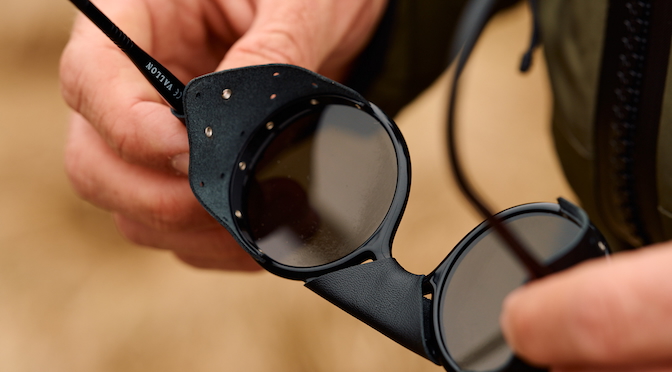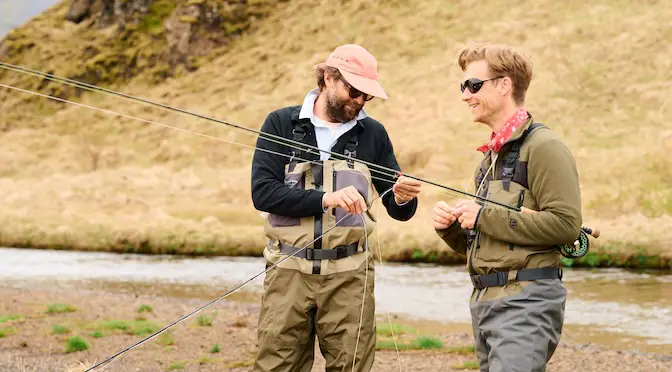Last updated on January 15th, 2024.
- Leadership and the Art of Presenting an Atlantic Salmon Fly - February 15, 2019
- What Fly Fishing has taught me about life and business – Part III - February 20, 2018
- What Fly Fishing has taught me about life and business – Part II - February 9, 2018
As winter drags on here in my northern clime, I increasingly find my thoughts drifting as I long for the warmer days ahead.
The opportunity to once again stand in the river casting a fly for Atlantic Salmon. It cannot come soon enough!
Several years ago now, I wrote a three part series of articles entitled “What Fly Fishing has taught me about life and business” which elicited a great response within both business and fly fishing circles. If you didn’t get a chance to read the series you can still do so here Part 1, Part 2 and Part 3. I was recently pondering these articles and the many comparisons which I had previously made and I started thinking about the specific comparison between Leadership and the Art of Presenting an Atlantic Salmon Fly. It struck me while doing so, that effective fly presentation while fly fishing for this challenging species has some very interesting parallels with how best to lead people within an organization.
Simply put, in order to be an effective leader in business, one needs to have followers! And of course, to be a successful fly fisher, one needs a fish to follow and then take one’s fly! But in both cases, there’s more to this than meets the eye!
To be successful as an Atlantic Salmon fly fisher it is paramount that you learn and understand the species’ behaviour and their habitat, in terms of water temperature, time of day, barometric pressure, wind direction, etc.. You need to appreciate what you cannot see under the water too … complex river currents, structure like rocks and roots and the physical geography of the river bed itself.
Equally important you need to learn what the salmon will respond to in terms of fly colour and composition. But if you ask most successful Atlantic Salmon fishers and professional guides alike, many will tell you that the single most important factor in hooking up is the presentation and the swing of the fly relative to the fish!
So if fly presentation is the greatest factor in influencing your chances of hooking a salmon, then what can we learn from this that we can apply to business leadership? I would love to have other readers of this article wade in here and offer their perspectives but here are three that I would offer up in the context of fly fishing for Atlantic Salmon:
Present your fly too far ahead of the fish and they will never see it, let alone follow it! That seems incredibly obvious doesn’t it!?! A fish can’t follow what a fish can’t see! The parallel in business is equally clear but often missed by many leaders. Throughout my career I have witnessed countless competent visionaries in business who fail completely as leaders and who invariably find themselves confounded as to why people “don’t get it”. And almost always these leaders never see themselves as the problem.
The reality is that the vision of these leaders is often too far ahead of the curve for others to understand or consequently, be motivated by. The truth is that if people don’t “get” where a leader wants to go, or appreciate it in a context and time frame that is relevant to them, then they simply will not follow the leader. It’s perfectly fine for a vision to be long term and aspirational mind you, however it needs to be broken down into executable strategic steps that the people can understand and that they can contribute to on a daily, monthly and yearly basis in the direction of the vision. If a leader fails to do this then they will likely fail to have the necessary followers to execute on their vision.
Cast your fly on top of the fish and they will take off in every direction! How many times have I inadvertently done this and then resorted to having to sit and wait a spell in hopes that the fish would return or worse yet having to move on to another pool and start over! An effective business leader is supposed to lead and not be in the middle of those who are accountable to execute on the strategy and vision. This is the classic behaviour of a micro manager who has a need to be in the middle of everyone and have their fingers and voice involved in every decision. We’ve all experienced these types of leaders in business and I’ve seen a lot of their organizations struggle.
Why? Because this behaviour causes disempowerment and disengagement in people and is often the reason why many ultimately choose to leave organizations … not unlike those fish who leave the pool! In short, such behaviour by a leader frustrates and undermines others in terms of what they have been asked to do. A leader’s role is not to be in the thick of everything and not to do everything … it is after all, to lead.
Swing a suitably interesting fly at the correct distance ahead of the fish and you will entice it to follow! Now this this doesn’t always hold true with Atlantic Salmon fishing and hence why they are called the fish of a thousand casts! If they did follow every time I would have a lot more hooked fish to my name!
The point is however, that the right lead and speed of the fly are critically important factors and they will materially increase your likelihood of hooking a salmon. In simple terms, the salmon needs to be able to see the fly and then to determine that it is sufficiently interesting and worthy of its pursuit.
In business, the leader too must master the ability to present a suitably interesting and inspiring vision and do so in a manner that enables others to grasp it, to believe it and to be compelled follow it. The leader needs to ensure that the vision is achievable (within a distance that people can see) and can be executed in an appropriate time frame (speed). The leader who can do this successfully will then create followers who will meaningfully contribute to driving the business forward!
As with fly fishing, a business leader you need to understand your environment, to determine how best to wade forward into the unknown and to find a way to attract others to follow you. You must understand and appreciate human behaviour, organizational behaviour, the business environment and the conditions within which people will be motivated to execute on your vision.
When you have mastered the ability to present the right message, at just the right distance in front of your organization, others will follow you, the leader … and when they do, just as when the salmon takes the fly, the result is pure magic!
Until we cross paths again, Tight Lines!






